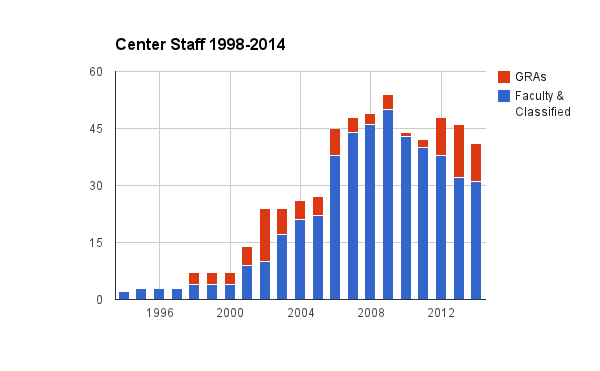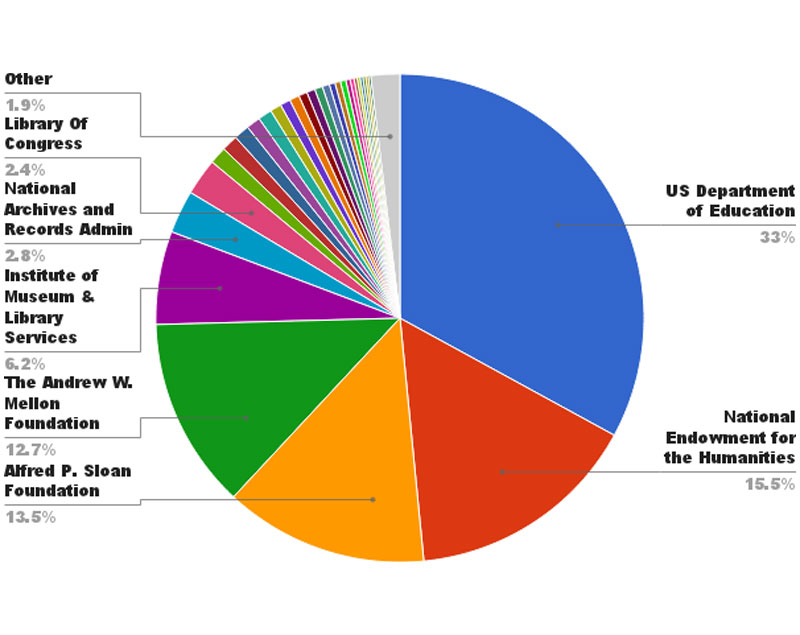Roy Rosenzweig founded the Center for History and New Media.
Michael O’Malley, who joined the Department the same semester that Roy launched the Center, became Roy’s main collaborator, and, in 1995, formally CHNM’s Associate Director. Elena Razlogova, who began a PhD at GMU in 1995, joined the Center as its first staff member, working ten hours a week. When the Department moved to Robinson Hall in 1997, CHNM expanded to two offices connected by a lobby area, which contained computers and a printer – not dedicated equipment for the Center, but available for general use by the Department. A postdoctoral fellow, Greg Brown, arrived in 1997, to work on Liberty, Equality, Fraternity. In 1998, three Graduate Research Assistants (GRAs) from the History Department joined the Center staff, together with a webmaster.

A grant in 2000 from the Alfred Sloan Foundation for ECHO, launched a major expansion of the Center.
That project attracted the Center’s first funding from the Institute for Museum and Library Services (IMLS) and the Andrew Mellon Foundation. IMLS also funded a new strand of Center projects in collaboration with libraries and museums, including, in 2007, Omeka, a web-based publishing platform for museums, the Center’s second major software development project. CHNM’s work in the TAH program also dramatically expanded in scale in 2007, when the US Department of Education awarded it a five-year, $7 million grant to build a clearinghouse site. In July 2006, as this expansion got underway, the Center relocated from the Pohick modules to the new Research Building, a humanities outlier among a range of science organizations.


Dan Cohen succeeded Roy as the Center’s director, with a senior leadership of three division directors – Kelly Schrum, director of the Education division since 2004, Sean Takats, who succeeded Dan as director of the Research division, and Sharon Leon, director of a new Public Projects division – together with Tom Scheinfeldt, who took on a Center-wide role as Managing Director. The award of a second NEH challenge grant, to build the endowment to $3 million, provided an opportunity to name the Center in Roy’s honour. Beginning in 2009, the CHNM developed a new strand of digital humanities projects – the One Week One Tool Summer Institutes (supported by NEH), the THATCamp unconferences (supported by the Mellon Foundation), and PressForward, the tool for capturing online scholarly communication (funded by the Sloan Foundation). The number of GRAs working in the Center doubled in 2012, thanks to a Provost’s PhD Grant that supported three cohorts of three graduate students a year, who undertook practicum courses at RRCHNM.
In 2013, Dan Cohen and Tom Scheinfeldt left the Center for positions at the Digital Public Library of America and the University of Connecticut. Together with the end of funding for the TAH program, a core strand of the Center’s work, in 2012, the departure of these key leaders marked the beginning of a new phase for RRCHNM.
